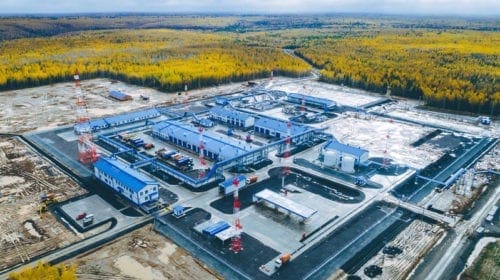This month, the U.S. Interior Department unveiled final revisions to an Obama-era rule aimed at curbing methane emissions from oil and natural gas operations on federal lands. The Environmental Protection Agency (EPA) also recently announced proposed improvements for the 2016 New Source Performance Standards (NSPS) designed to ease regulatory burdens on domestic energy producers by modifying the frequency for monitoring leaks at well sites and compressor stations and adopting other important technical corrections to the original NSPS rule. Both efforts seek to address overreaching regulatory issues advanced under the previous administration to support reasonable standards that protect the environment, encourage increased domestic energy production, as well as recognize the significant progress that has made in reducing energy emissions without excessive regulations designed to hamper oil and gas production.
The rollback of unnecessary and overly burdensome regulations under President Trump’s American Energy Dominance agenda has contributed to record U.S. oil production and countless related benefits afforded to our society. According to the U.S. Energy Information Administration (EIA), the U.S. became the largest global crude oil producer this year, surpassing Russia and Saudi Arabia. EIA estimated that the U.S. produced an average of 10.9 million barrels a day (b/d) in August, compared with about 10.8 million b/d by Russia and around 10.4 million b/d from Saudi Arabia. The U.S. passed Saudi Arabia in February for the first time in more than two decades, and topped Russia for the first time since 1999 this summer.
Texas continues to lead the U.S. in oil and natural gas production and growth. Crude oil production in the state totaled an estimated 980 million barrels through August of 2018, representing an increase of 170 million barrels of oil produced compared to the same timeframe last year, and a total of 1.5 billion barrels forecasted for the full year, according to TIPRO. Natural gas production increased slightly for a total of 5,450,732,930 cubic feet of gas produced through August. As anticipated, much of the increased output is coming from West Texas. Permian Basin production is expected to average 3.4 million b/d in 2018, an 871,000 b/d increase from 2017, and average 3.9 million b/d in 2019, a 514,000 b/d increase from 2018.
Pipeline capacity constraints in West Texas have lowered wellhead prices for producers in the Permian, however, which could slow projected growth of crude output next year. As midstream companies rush to add additional capacity to ease bottlenecks, several have accelerated their pipeline infrastructure projects. Plains All American Pipeline, for instance, recently announced that two West Texas crude oil projects would begin partial operations ahead of their original schedules, including the Sunrise expansion project in the fourth quarter of this year and the Cactus II line to begin partial service in the third quarter of next year.
The longer term outlook for domestic production could also be impacted from an escalation in the China-U.S. trade war and rising costs for oil and gas operators and critical infrastructure projects due to steel and aluminum tariffs. Tariffs on imported steel and aluminum have been described by many as a tax against U.S.-based producers, large and small, adding significant cost on a per-well basis and a punitive tax of tens of millions of dollars to some critical infrastructure projects.
Nonetheless, with expanding exploration and production activity in 2018, Texas oil and natural gas employment has also continued to rise as employers compete for a limited pool of talent. More than 9,000 net new jobs were added to the state economy through August of this year compared to 2017, for a total of 335,000 workers directly employed by the industry, subject to revisions. Upstream sector jobs continued to account for the majority of the growth, including a total of 78,000 oil and gas extraction jobs and 141,000 oil and gas support activities jobs in the state. Texas oil and gas positions command an average salary of $128,000 per year, 132 percent more than average private sector wages in Texas, for a total payroll exceeding $42 billion.
Continuing regulatory improvements, expanding pipeline capacity and an expedited resolution to trade disputes will support increased U.S. energy production, strengthen national security and drive economic growth for the state of Texas.
TIPRO is a trade association representing the interests of nearly 3,000 independent oil and natural gas producers and royalty owners throughout Texas. As the largest statewide association in Texas that represents both independent producers and royalty owners, members include small businesses, the largest, publicly-traded independent producers, and mineral owners, estates, and trusts.
Oil and gas operations are commonly found in remote locations far from company headquarters. Now, it's possible to monitor pump operations, collate and analyze seismic data, and track employees around the world from almost anywhere. Whether employees are in the office or in the field, the internet and related applications enable a greater multidirectional flow of information – and control – than ever before.












